Our team loves nothing more than being able to delve into the history of each artwork that comes into our studio. Every so often, we are greeted by a familiar face from British history – royalty and aristocracy, soldiers and lawmakers. However, some of these are more infamous than others, as was the case with a portrait of Tudor nobleman Thomas Howard. His portrait, after an original by Holbein, shows a stern and authoritative gaze reflective of his influential position.
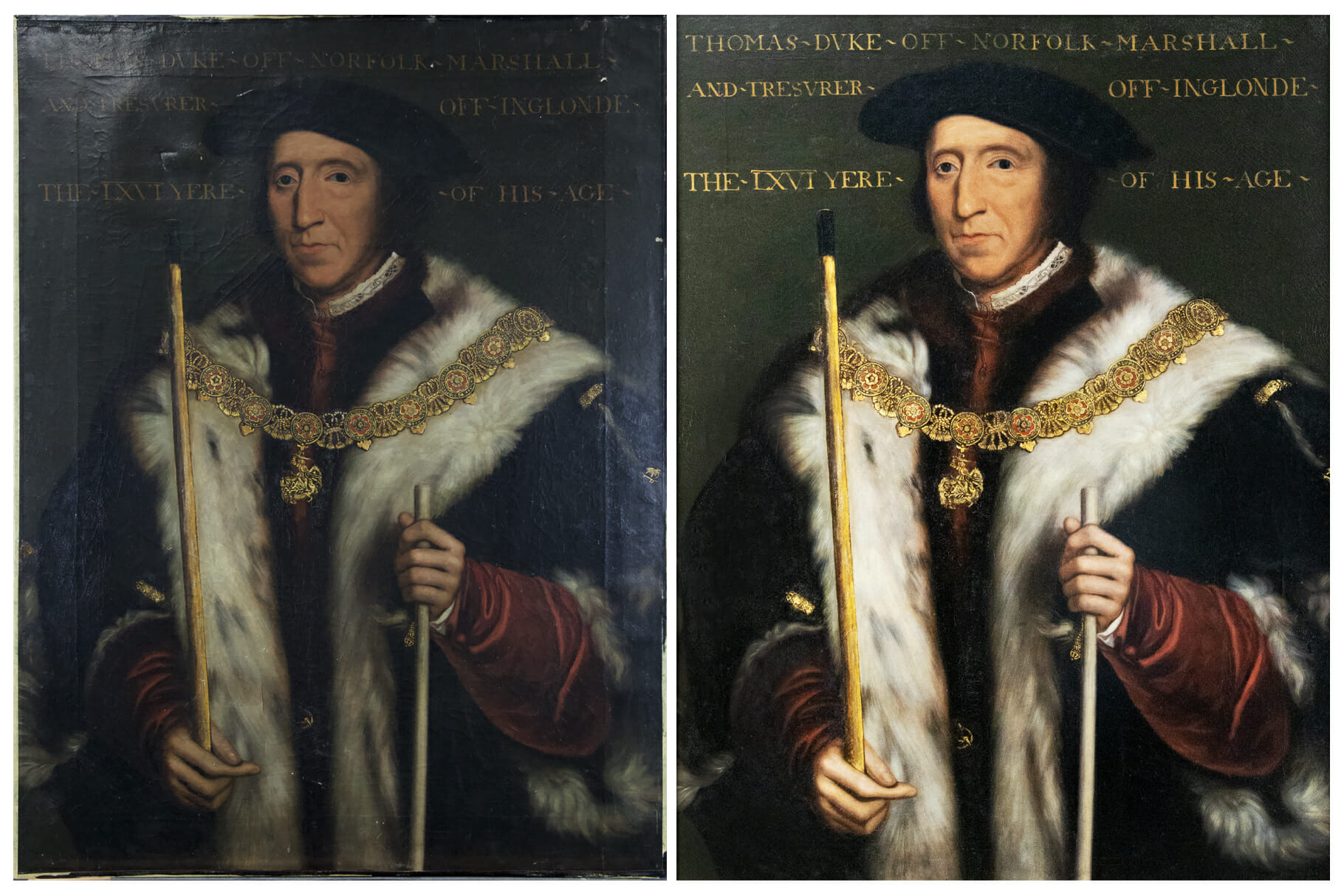
As this intriguing portrait was also of sentimental significance to our client, our team was delighted to assist in preserving a figure of both historic and personal importance.
Who was Thomas Howard?
Thomas Howard was the Duke of Norfolk and a significant figure in the Tudor court. An uncle to both Anne Boleyn and Catherine Howard, he played an instrumental role in their marriages to Henry VIII and their subsequent brutal demise. His daughter married Henry VIII’s illegitimate son Henry FitzRoy, further entwining his family with the royal house.
 Above: a detail from an engraving after Holbein’s original portrait
Above: a detail from an engraving after Holbein’s original portrait
Although he had been favoured by Henry VIII for much of his life in court, his position became unstable following the execution of his niece Catherine Howard in 1542 and again in 1546 when he and his son were arrested for treason.
Sent to the Tower of London to await his fate, the duke’s family gave evidence against him – including testimony from his estranged wife who accused him of severe mistreatment and abuse during their marriage. His son was beheaded in January the following year, but Thomas avoided the executioner’s blade when Henry VIII died later that month. Due to his conservative beliefs, he was pardoned by the catholic Queen Mary I, who restored his office of Earl Marshal in 1553.
Pre-raphaelite connections
Interestingly, this Holbein copy has connections to the much later Pre-Raphaelite brotherhood. The painting had been inherited from our client’s parents who acquired it in the early 1960s from the sale of a Victorian house and its contents. Located in West Sussex, Comptons Brow was built by and lived in by John Guille Millais (1865-1931) the son of artist John Everard Millais.

As their name suggests, the Pre-Raphaelites were interested in art that predated the height of the Italian renaissance. Their focus was often on ‘mediaeval’ topics, as well as historical figures. Typically, they would study older styles and this Holbein copy could have been one of them.
Conservation assessment
Our conservators took photographs of the painting under UV light and raking light to fully assess the painting before conservation treatments took place. This also allowed our client to gain more of an insight into the materials of the piece and prior alterations that may have taken place in the decades since its first composition.
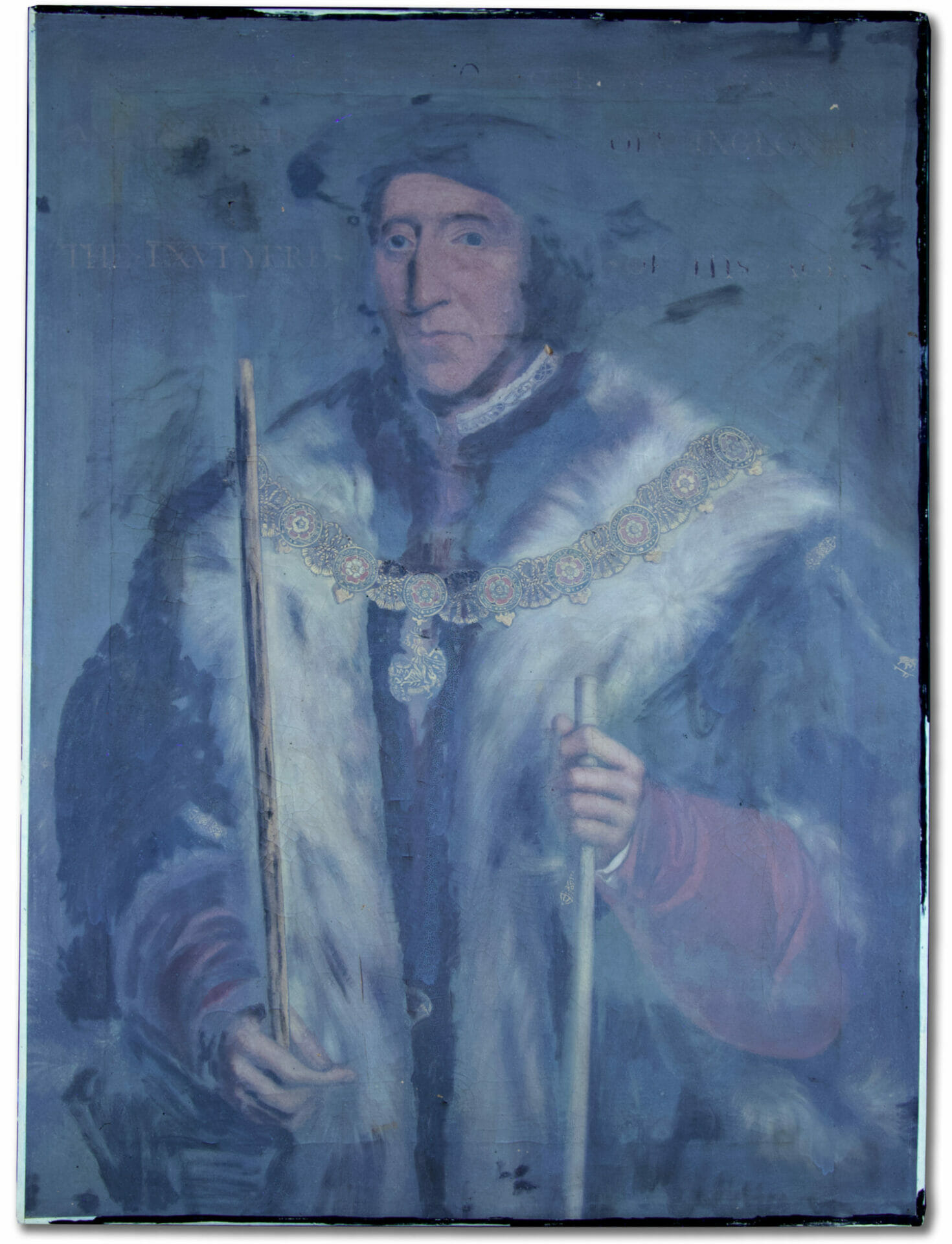
The UV light (seen above) displayed the distinctive greenish-blue fluorescence of an aged natural resin varnish layer. There was clear evidence of previous retouching and large areas of overpaint, these appear dark blue-black in the photograph. The overpainted areas were prevalent in the darker areas of the painting, especially around the face, neck and arms.
 Above: swab tests were completed before the conservation treatments took place
Above: swab tests were completed before the conservation treatments took place
Our conservator Sophie carried out preliminary aqueous and solvent sensitivity tests to establish whether the areas of overpaint were safe to remove. During the restoration, she would be able to see how much original paint was underneath these historic alterations.
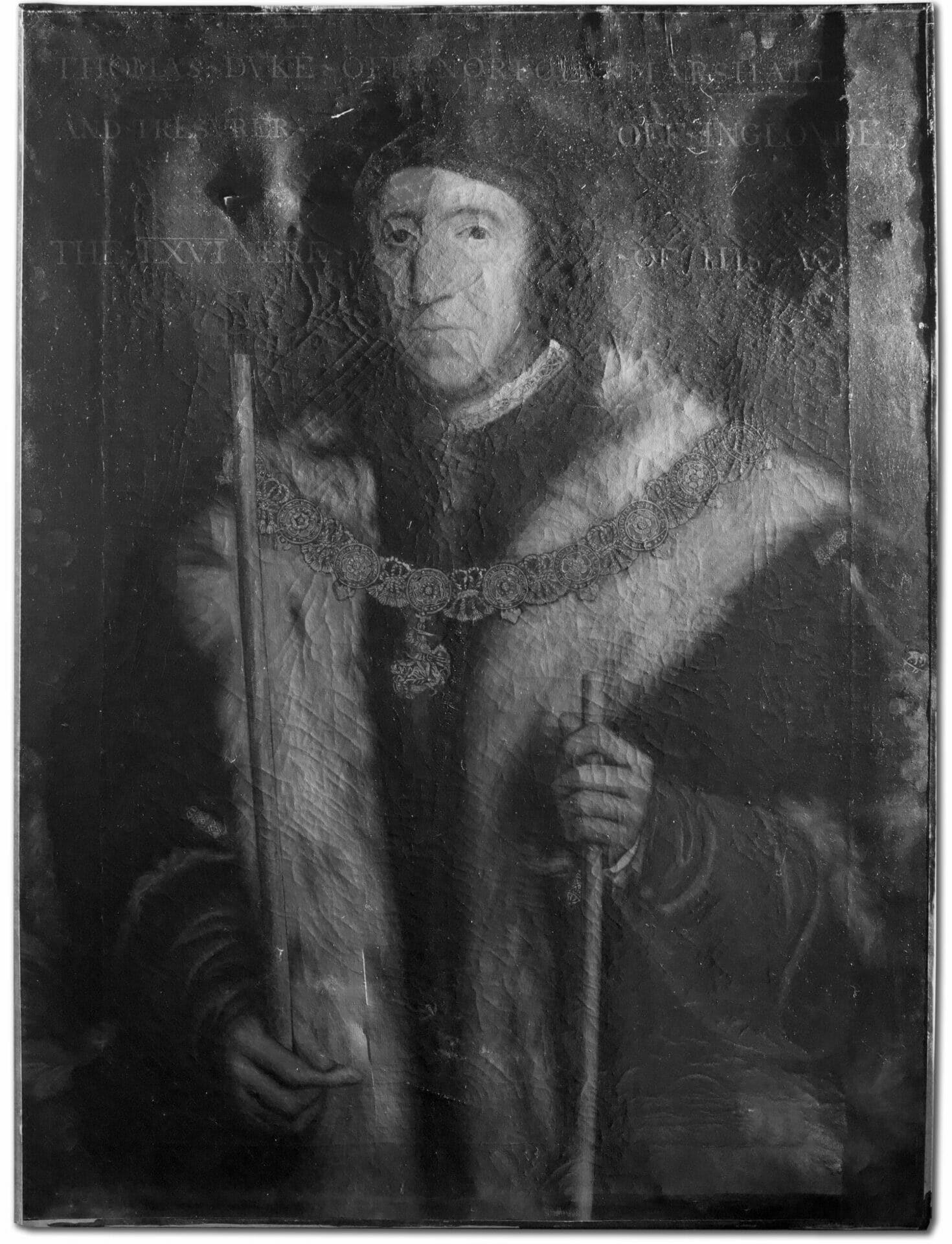
The raking light photography (seen above in black and white) uses an angled light to highlight structural deformations in the canvas support and also instances of cleavage, cupping and flaking in the paint layer. This photograph highlights the deformations around an old patch repair and the raised paint layers across most of the surface that will need to be addressed.
The restoration
The painting came to our attention due to a darkened surface, flaking paint and a small tear to the canvas. Following assessment, our conservator Sophie put together a treatment proposal to prevent any further deterioration of the artwork.
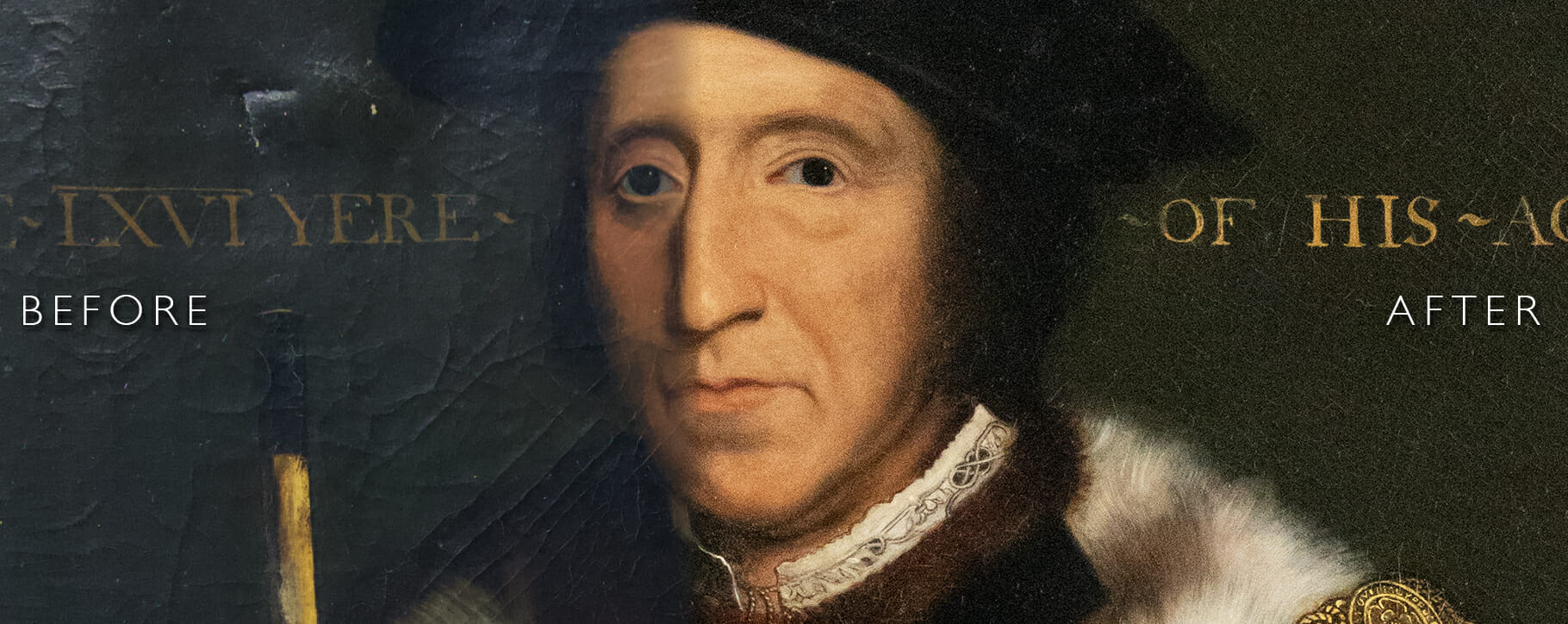
Following consolidation of the edges of the painting and other areas of lifting paint, a surface clean was conducted to remove any outer layers of smoke, nicotine and other forms of historic contamination. The discoloured varnish was then removed by Sophie over a number of hours, this is achieved with a small cotton swab soaked in a conservation solution. The surface clean and varnish removal successfully revealed much richer colours than were previously visible.

The tear was repaired thread-by-thread under a microscope, an old repair needed to be removed during the process, this was replaced using up-to-date conservation techniques.
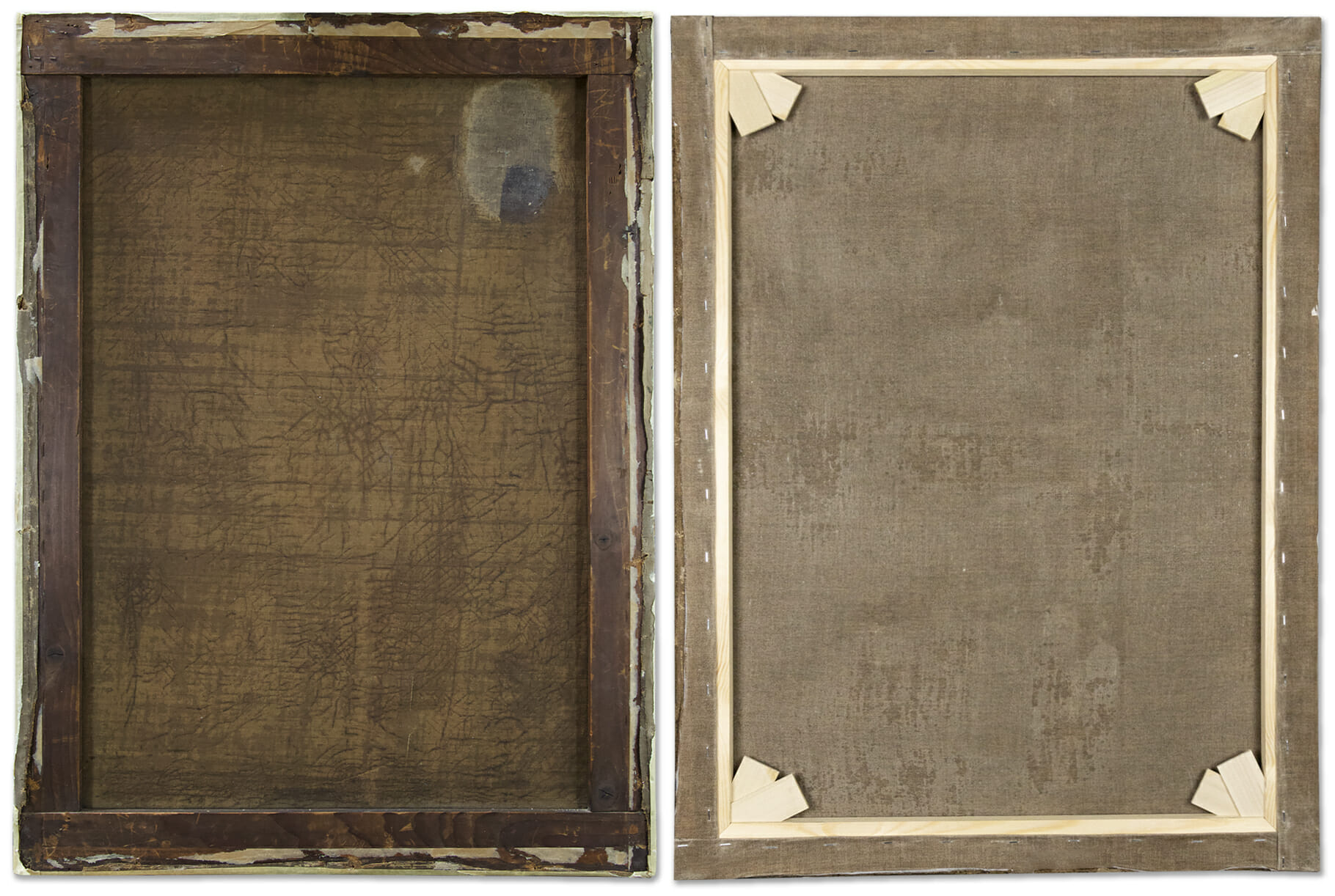
A heat, weight and moisture treatment was also performed to flatten the deformed canvas. The painting was relined and a strainer was replaced to give it further stability.

The transformation of the Duke’s portrait was a remarkable sight, following the fine details to be clearly viewed whilst allowing for the safe preservation of the artwork into the future.

Historically appropriate framing
Alongside the conservation treatments, our team assisted in the creation of a new frame that suited our client’s stylistic requirements. Using a photograph of the painting as it originally looked, a portfolio of options were put together. These included Victorian and renaissance mouldings that maintained the historic appeal of the artwork whilst contrasting its connections to both Tudor history and the Pre-Raphaelites.

When the painting restoration was complete, we could show how the piece would look in its new frame prior to a final decision being made. This is helpful when a painting has quite a considerable visual transformation, as the new colours may create a need for a different shape or colour. The option selected was an ebony and gold antique style, this worked very well in complimenting the gold lettering and dark features of the portrait.
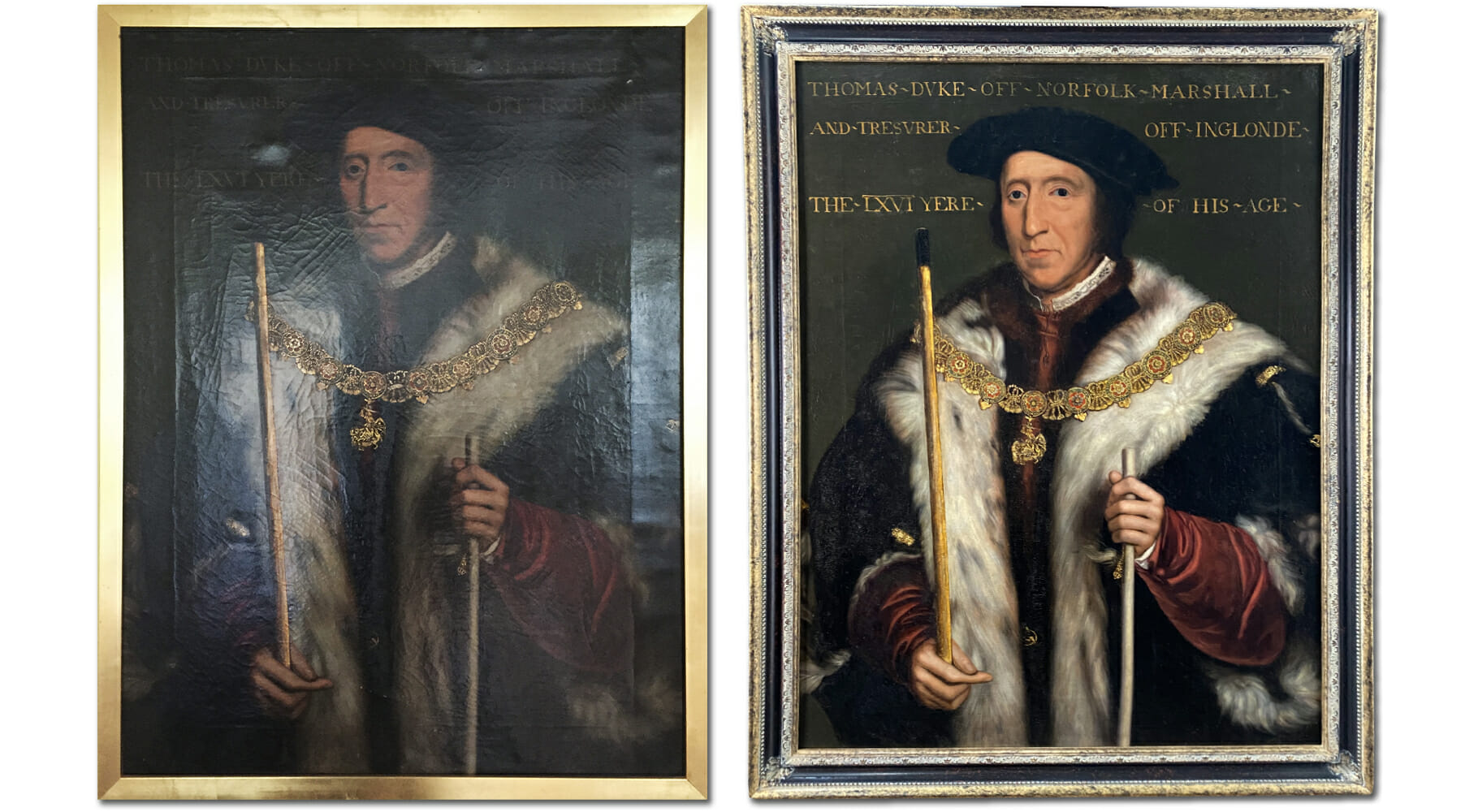
Client response

Following the restoration process and the new frame, our client was very pleased with the result. Not only was this personally significant piece now in a stable condition for future generations, but the Tudor nobleman appeared to have been revived in his true vivid colour.
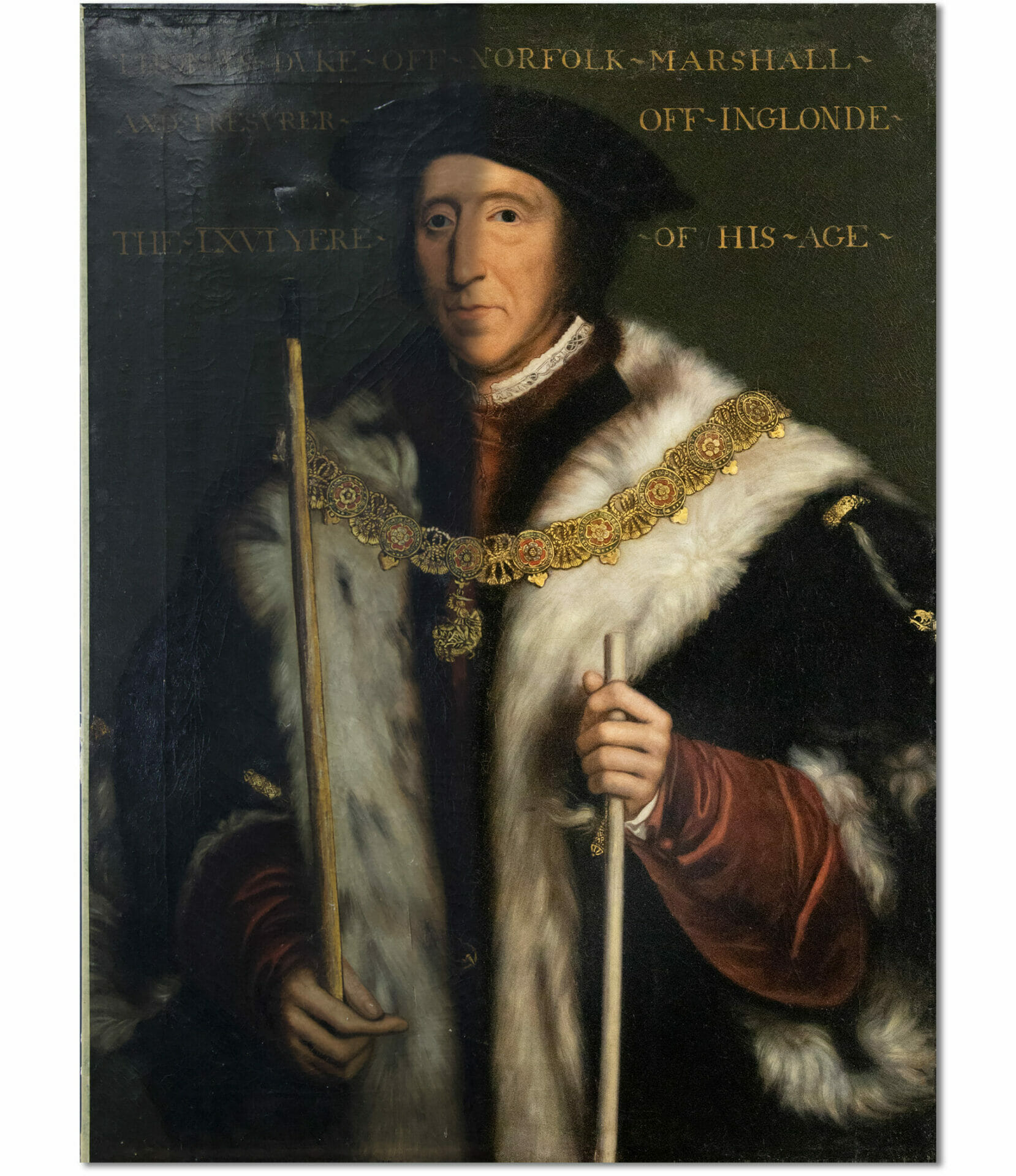
How can we help?
If you have a similar portrait in need of professional care or an heirloom that requires restoration, please contact our friendly team who will be happy to advise further.
To make contact please email us via [email protected] or call 0207 112 7576

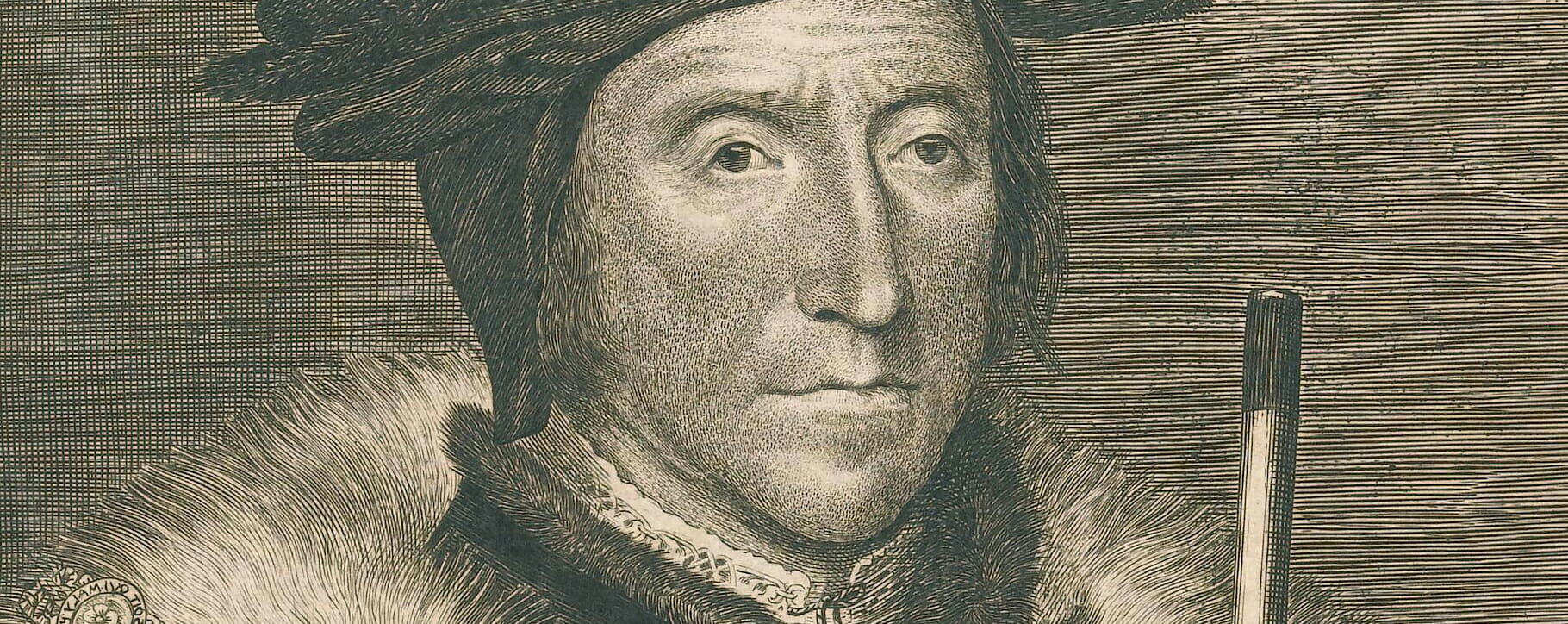 Above: a detail from an engraving after Holbein’s original portrait
Above: a detail from an engraving after Holbein’s original portrait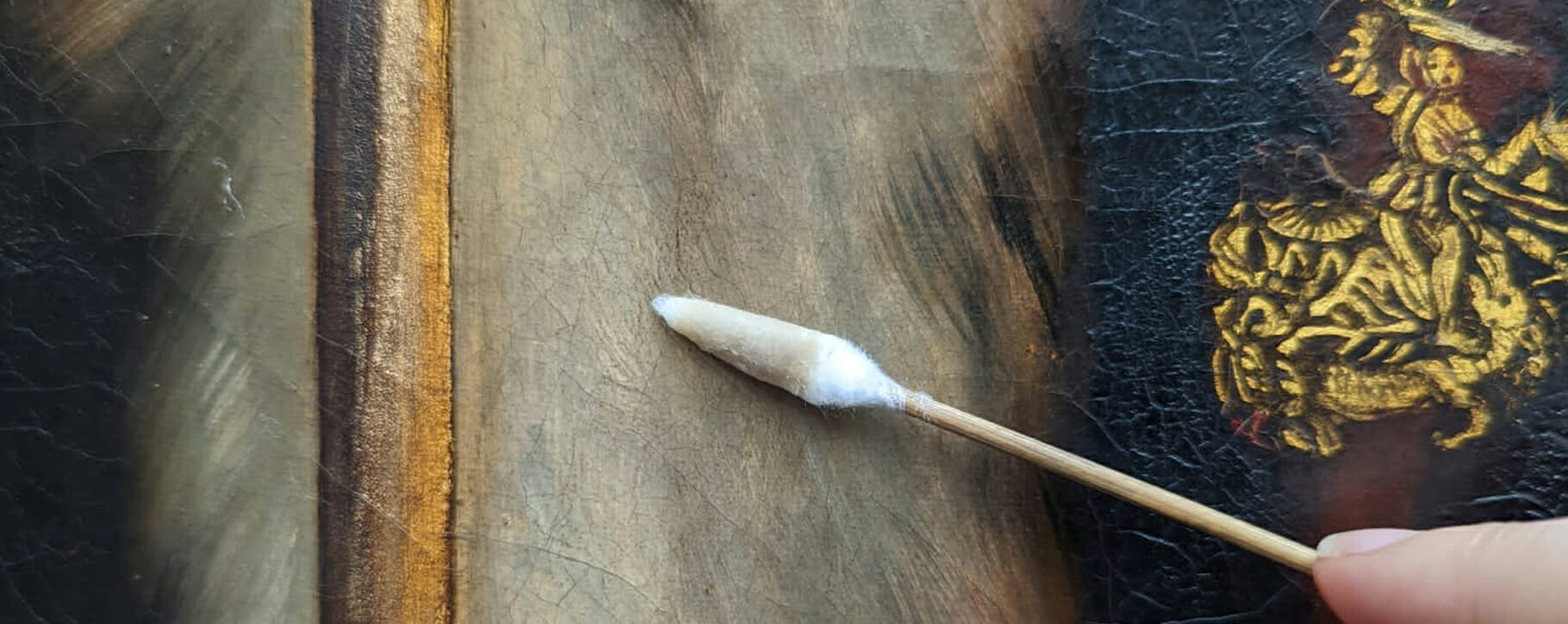 Above: swab tests were completed before the conservation treatments took place
Above: swab tests were completed before the conservation treatments took place




